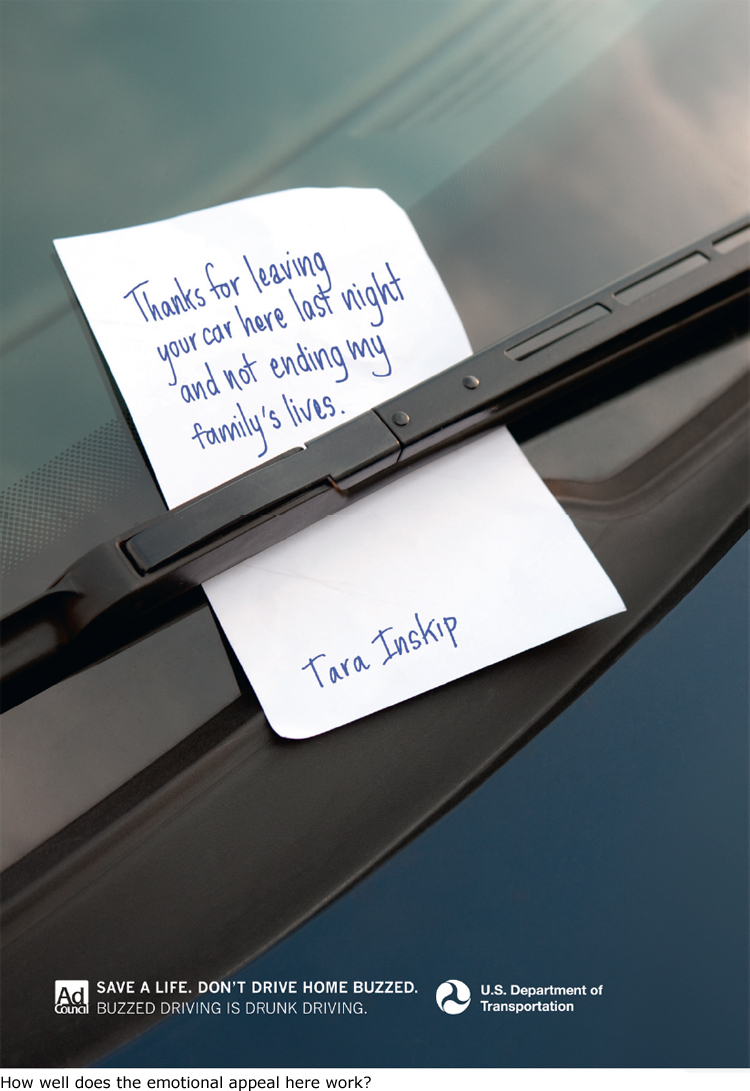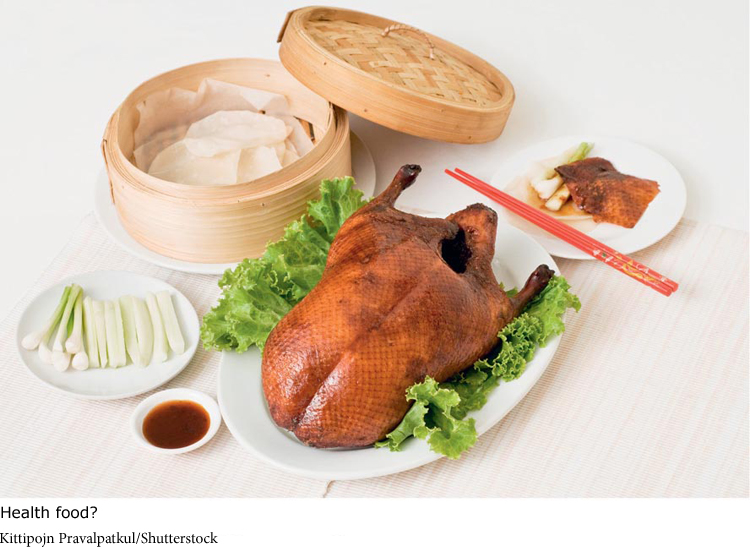Examining Arguments Based on Emotion: Pathos
Examining Arguments Based on Emotion: Pathos
Some emotional appeals are just ploys to win over readers with a pretty face, figurative or real. You’ve seen ads promising an exciting life and attractive friends if only you drink the right soda or wear a particular brand of clothes. Are you fooled by such claims? Probably not, if you pause to think about them. But that’s the strategy — to distract you from thought just long enough to make a bad choice. It’s a move worth commenting on in a rhetorical analysis.

Yet emotions can add real muscle to arguments, too, and that’s worth noting. For example, persuading people not to drink and drive by making them fear death, injury, or arrest seems like a fair use of an emotional appeal. The public service announcement above uses an emotion-laden image to remind drivers to think of the consequences.
In a rhetorical analysis, you might note the juxtaposition of image with text, leading readers to connect casual notes left on windshields with the very serious consequences of drunk driving.
In analyzing emotional appeals, judge whether the emotions raised — anger, sympathy, fear, envy, joy, love, lust — advance the claims offered. Consider how columnist Ron Rosenbaum (whom we met in Chapter 2) makes the reasonable argument he offers for fatty foods all the more attractive by larding it with voluptuous language:
The foods that best hit that sweet spot and “overwhelm the brain” with pleasure are high-quality fatty foods. They discourage us from overeating. A modest serving of short ribs or Peking duck will be both deeply pleasurable and self-limiting. As the brain swoons into insensate delight, you won’t have to gorge a still-craving cortex with mediocre sensations. “Sensory-specific satiety” makes a slam-dunk case (it’s science!) for eating reasonable servings of superbly satisfying fatty foods.
— Ron Rosenbaum, “Let Them Eat Fat”
Does the use of evocative language (“swoons,” “insensate delight,” “superbly satisfying,” “slam-dunk”) convince you, or does it distract from considering the scientific case for “sensory-specific satiety”? Your task in a rhetorical analysis is to study an author’s words, the emotions they evoke, and the claims they support and then to make this kind of judgment.

RESPOND •
Browse YouTube or another Web site to find an example of a powerful emotional argument that’s made visually, either alone or using words as well. In a paragraph, defend a claim about how the argument works. For example, does an image itself make a claim, or does it draw you in to consider a verbal claim? What emotion does the argument generate? How does that emotion work to persuade you?